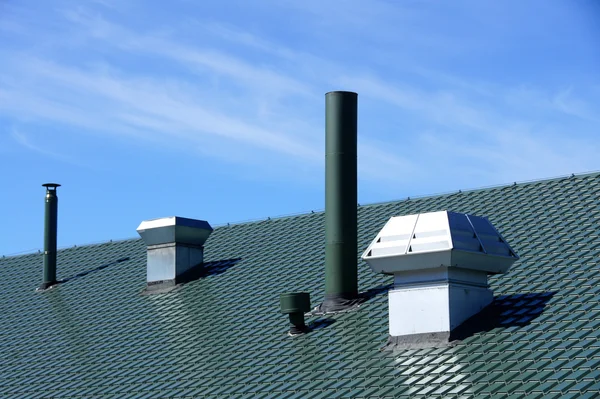Do you know what roof venting is and what it does? If not, you’re in for a surprise. Roof vents are essential to your home’s ventilation system and play a crucial role in preventing moisture damage and improving energy efficiency. Read on to learn more about roof vents and their importance.
What is Roof Venting and What Does a Roof Vent Do?
Roof venting is installing vents in the roof to allow hot air and moisture to escape from the attic. This is important because hot air and moisture can cause damage to the roof and the home, making the home uncomfortable to live in.
There are two types of roof venting: passive and active. Passive roof venting relies on natural air currents to move the air through the vents, while active roof venting uses fans to force the air through the vents. Active roof venting is more effective than passive venting but is also more expensive.
Roof vents are typically installed along the ridge line of the roof, where they can be easily seen. They are usually made of metal or plastic and are available in various sizes.
The Benefits of Roof Vents
There are several benefits to installing roof vents in your home.
Reduced Energy Costs
One of the most significant benefits of roof vents is that they can improve energy efficiency by allowing hot air to escape from the attic. This can help keep your home cooler in the summer and reduce strain on your air conditioning system, leading to lower energy bills.
It can also help keep the attic and roof from becoming overheated, which can damage shingles and potentially lead to a roof collapse.
Preventing Ice Dams
In cold climates, roof vents can also prevent ice dams from forming on the roof. Ice dams occur when warm air escapes through a poorly ventilated attic and melts the snow on the roof, causing water to pool and freeze at the roof’s edge. This can lead to costly damage to the roof and gutters.
Roof vents can prevent this by properly ventilating the attic and keeping it cool enough to prevent snow melt. It’s important to note that roof vents alone may not be enough to prevent ice dams; proper insulation and ventilation throughout the house are also important.
Improved Home Ventilation
In addition to keeping the attic well-ventilated, roof vents can also improve overall ventilation in the home. This helps keep indoor air fresh and prevents moisture buildup, which can lead to mold growth and other issues. It can also improve air quality and potentially alleviate allergies or respiratory issues.
As you can see, roof vents play an essential role in maintaining a healthy and energy-efficient home. If your home doesn’t have roof vents or is unsure of their effectiveness, consider consulting with a professional to determine if installing them is right for you.
The Different Types of Roof Vents
In addition to the two types of roof venting mentioned above, there are also several different types of roof vents. These include:
- Ridge Vents: These long, narrow vents run along the roof’s ridge line. They blend in well with the roof and can provide maximum ventilation capabilities.
- Gable Vents: These triangular-shaped vents are typically installed on the end walls of a peaked roof. They allow for airflow through both sides of the attic space.
- Soffit Vents: Soffit vents are usually small and rectangular and installed in the roof’s soffit (under-eave) area. They provide additional ventilation to complement ridge or gable vents.
- Power Vents: These are active vents that use a fan to force air through the vent. They are most often used in areas with limited natural ventilation or for homes with excessive attic heat.
Now that you know about roof venting and its benefits consider if it’s something worth adding to your home. Properly ventilating your attic and keeping your home cool can prevent damage and save energy costs. It’s a win-win situation!
How to Install Roof Vents?
It’s important to note that professionals like us at Trojan Roofing should always do installing roof vents. We will ensure proper installation and can advise on the best type of vent for your specific needs and roof style.
However, if you are interested in the process, it involves removing shingles or other roof material to make room for the vent, properly sealing and securing the vent, and then replacing any shingles or materials removed. It’s crucial to have a professional perform this task to prevent damage to your roof and ensure proper ventilation.
Trojan Roofing: Top Roofing Services Provider in Indianapolis
At Trojan Roofing, we can handle all your roofing needs, including installing and maintaining roof vents. Our expert team has years of experience and training, and we prioritize excellent customer service. We offer free estimates and competitive prices, so contact us today to learn more about our services and how we can help improve the ventilation and overall health of your home’s roof. Trust Trojan Roofing for all your roofing needs.

